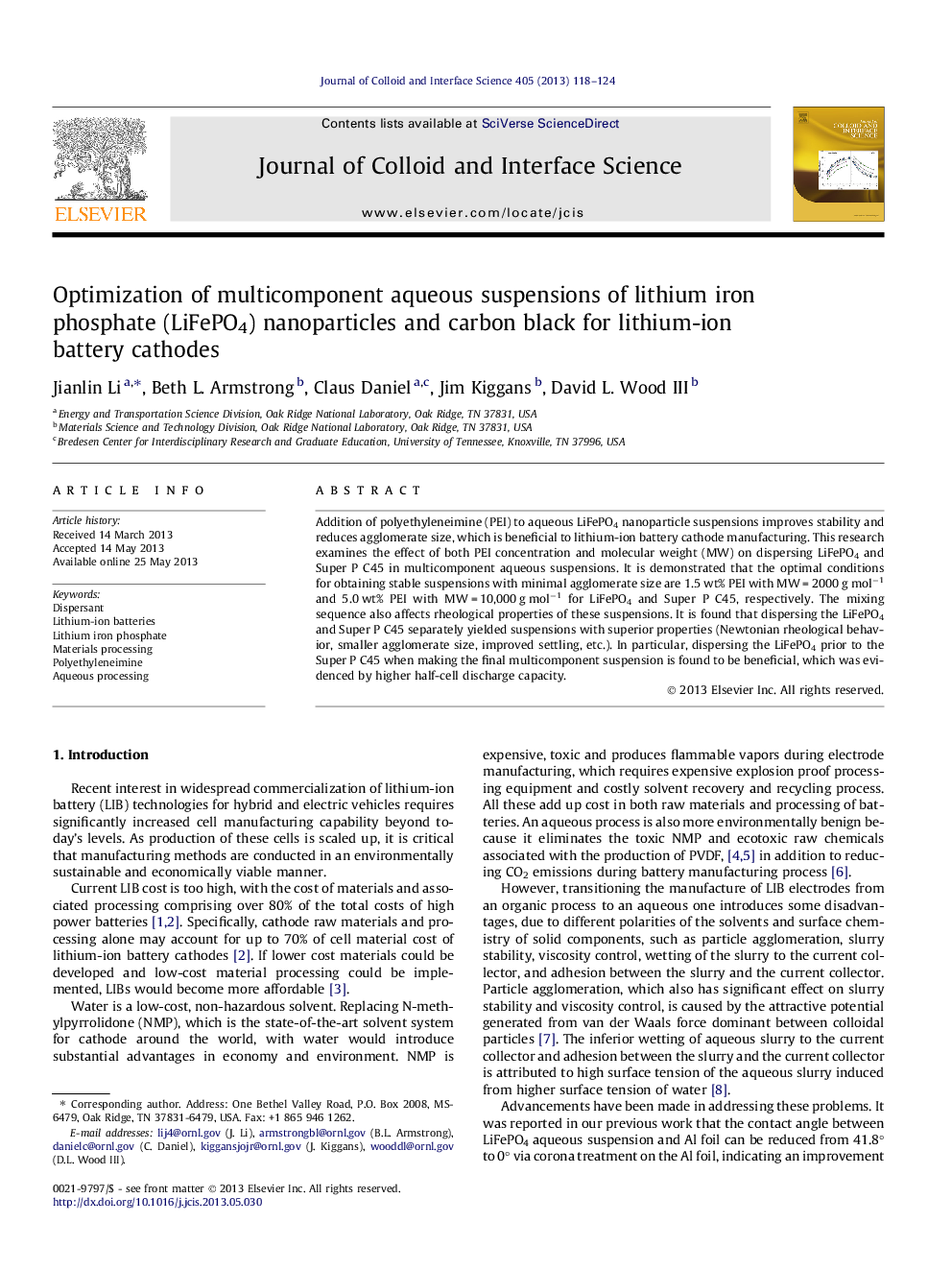| کد مقاله | کد نشریه | سال انتشار | مقاله انگلیسی | نسخه تمام متن |
|---|---|---|---|---|
| 607642 | 1454590 | 2013 | 7 صفحه PDF | دانلود رایگان |

• Optimal dispersant conditions vary for dispersing different electrode components.
• Optimal condition to disperse LiFePO4 is 1.5 wt% polyethyleneimine (MW = 2000 g mol−1).
• Optimal condition to disperse C45 is 5 wt% polyethyleneimine (MW = 10,000 g mol−1).
• Cathodes with dispersing LiFePO4 and C45 separately show better performance.
Addition of polyethyleneimine (PEI) to aqueous LiFePO4 nanoparticle suspensions improves stability and reduces agglomerate size, which is beneficial to lithium-ion battery cathode manufacturing. This research examines the effect of both PEI concentration and molecular weight (MW) on dispersing LiFePO4 and Super P C45 in multicomponent aqueous suspensions. It is demonstrated that the optimal conditions for obtaining stable suspensions with minimal agglomerate size are 1.5 wt% PEI with MW = 2000 g mol−1 and 5.0 wt% PEI with MW = 10,000 g mol−1 for LiFePO4 and Super P C45, respectively. The mixing sequence also affects rheological properties of these suspensions. It is found that dispersing the LiFePO4 and Super P C45 separately yielded suspensions with superior properties (Newtonian rheological behavior, smaller agglomerate size, improved settling, etc.). In particular, dispersing the LiFePO4 prior to the Super P C45 when making the final multicomponent suspension is found to be beneficial, which was evidenced by higher half-cell discharge capacity.
Figure optionsDownload high-quality image (76 K)Download as PowerPoint slide
Journal: Journal of Colloid and Interface Science - Volume 405, 1 September 2013, Pages 118–124